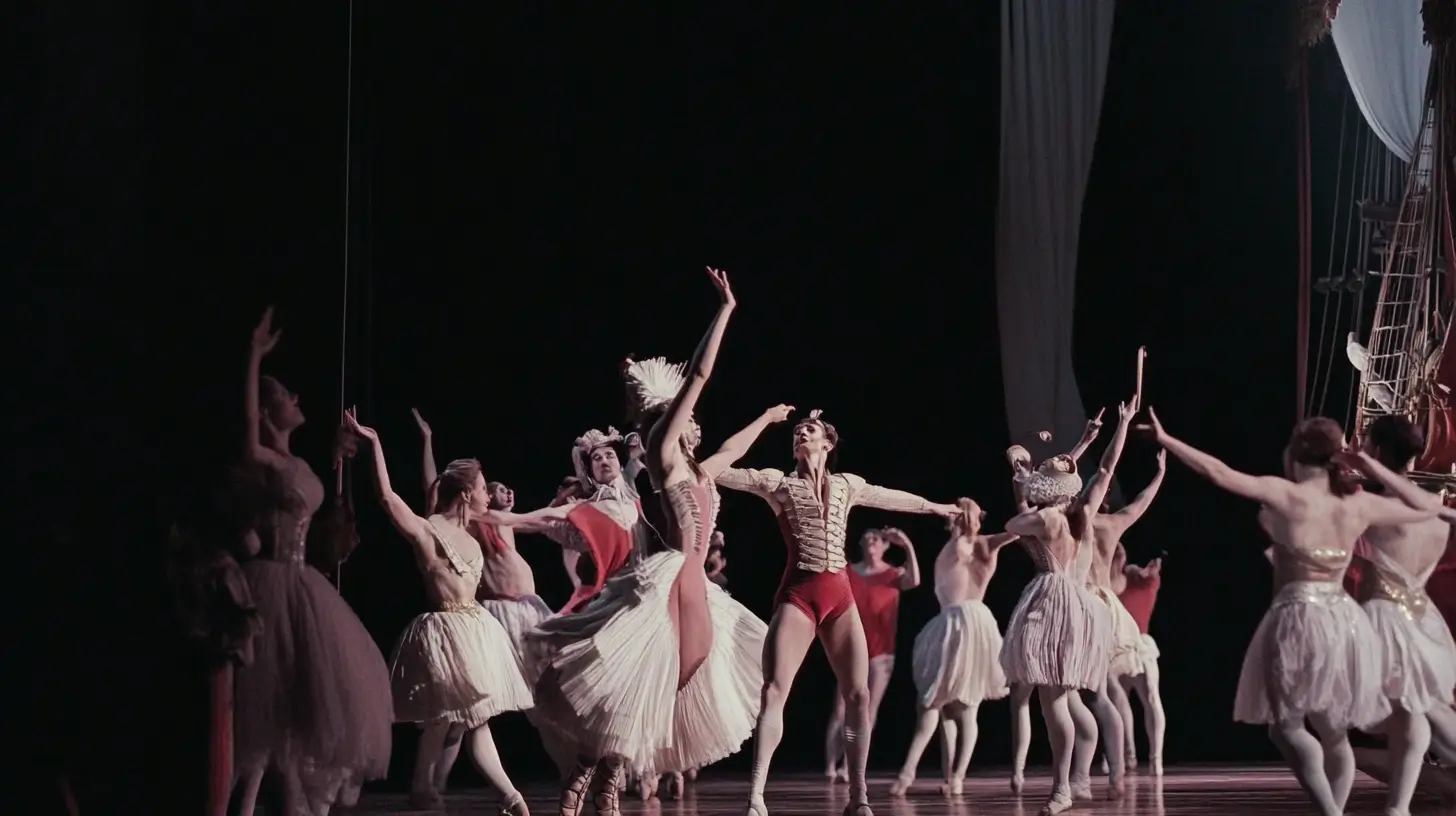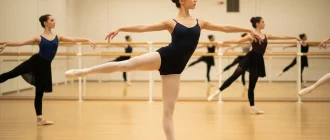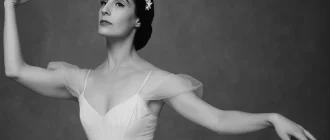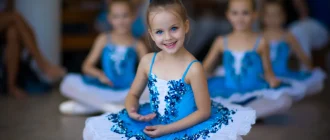Le Corsaire ballet is a captivating story of love and piracy. Premiering in 1856, it remains a staple in ballet theaters worldwide. This article explores its history, key productions, and iconic characters, offering a comprehensive guide for enthusiasts.
Key Takeaways
- Le Corsaire originated in Lord Byron’s poem and was first staged by Joseph Mazilier in 1856, marking the beginning of its evolution as a beloved ballet.
- Marius Petipa’s numerous revivals played a crucial role in refining Le Corsaire’s narrative and choreography, thereby enhancing its appeal to contemporary audiences.
- Modern productions, particularly by the American Ballet Theatre and the English National Ballet, have innovatively adapted Le Corsaire, preserving its legacy while making it accessible to new audiences.
| Category | Details |
|---|---|
| Title | Le Corsaire |
| Premiered | January 23, 1856 |
| Original Choreography | Joseph Mazilier |
| Composer | Adolphe Adam (with additional music by Cesare Pugni, Léo Delibes, Riccardo Drigo, and others) |
| Libretto | Jules-Henri Vernoy de Saint-Georges (based on Lord Byron’s 1814 poem “The Corsair”) |
| Original Language | French |
| Genre | Romantic Ballet |
| Setting | Ottoman Empire, on the Mediterranean Sea |
| Plot Summary | The ballet follows the adventures of a pirate, Conrad, who falls in love with Medora, a beautiful slave girl, and his quest to rescue her from the Turkish Pasha. |
| Main Characters | – Conrad (the pirate leader) – Medora (a slave girl, Conrad’s love) – Gulnare (another slave girl) – Birbanto (Conrad’s treacherous friend) – Pasha Seyd (a Turkish nobleman) |
| Iconic Scenes | – Pas de trois des odalisques (The three odalisques dance) – The Jardin Animé scene (a dream sequence in a beautiful garden) – Pas de deux of Medora and Conrad (often a showpiece in galas) |
| Dance Style | Classical ballet with a blend of athleticism, virtuosity, and Romantic expressiveness |
| Notable Productions | – 1899: Revival by Marius Petipa at the Mariinsky Theatre – 1998: Production by American Ballet Theatre – 2006: Boston Ballet adaptation |
| Costume and Design | Lavish costumes inspired by Ottoman styles, with vibrant, colorful designs representing pirates, enslaved people, and nobles. Exotic sets depicting a harem, market scenes, and pirate ships. |
| Cultural Impact | “Le Corsaire” has been a staple in the ballet world, particularly for its dazzling male variations and virtuoso choreography, and is frequently performed by major ballet companies worldwide. |
| Famous Adaptations | Various companies have adapted the ballet, modifying choreography and music while retaining the core plot. Marius Petipa’s version is the most well-known. |
| Difficulty Level | High: It demands technical prowess and dramatic expression from dancers, especially in male roles. |
Origins of Le Corsaire

The roots of “Le Corsaire” can be traced back to the literary world, specifically to Lord Byron’s 1814 poem, “The Corsair”. This romantic and adventurous narrative captured the imagination of its readers, laying the groundwork for what would become a beloved ballet. The transition from poem to stage began with the creative vision of Joseph Mazilier, who first presented “Le Corsaire” on January 23, 1856, at the Théâtre Impérial de l’Opéra in Paris.
The original libretto, crafted by Jules-Henri Vernoy de Saint-Georges, set the stage for a dramatic and captivating performance that intertwined love, betrayal, and heroism. Mazilier’s production was a spectacle of its time, blending the exotic allure of piracy with the elegance of classical ballet. This initial performance marked the beginning of a rich and evolving history for “Le Corsaire.”
Key Productions Throughout History
Since its debut, “Le Corsaire” has undergone numerous revisions and adaptations, adding new layers to its rich tapestry of music. Introduced to Russia on January 24, 1858, at the Imperial Bolshoi Kamenny Theatre, the ballet quickly gained popularity and inspired various interpretations. Its history is marked by significant revisions, particularly those by Marius Petipa, which have shaped the ballet into its current form.
Throughout the years, “Le Corsaire” has had a profound influence on ballet repertoires globally, inspiring numerous productions and adaptations. From Ivan Clustine’s staging in 1894 to modern renditions, the ballet’s enduring appeal lies in its ability to captivate audiences with its dramatic narrative and vibrant choreography.
Petipa’s Revivals
Marius Petipa’s revivals of “Le Corsaire” are pivotal in the ballet’s history. His first revival, staged on February 5, 1863, was tailored for his wife, Maria Surovshchikova-Petipa, showcasing her talents as a prima ballerina. This revival set a new standard for the ballet, emphasizing dramatic storytelling and intricate choreography.
Petipa continued to refine “Le Corsaire,” with his second revival premiering on February 6, 1868, for ballerina Adèle Grantzow. Each revival brought new elements and interpretations. Petipa staged his third revival on December 12, 1880, featuring the ballerina Eugenia Sokolova as Medora. These revivals aimed to preserve and enhance the ballet, making it more accessible and engaging for young women and contemporary audiences.
The last of Petipa’s revivals, staged on January 25, 1899, at the Imperial Mariinsky Theatre, included substantial revisions to Adam’s original score and incorporated new music. These changes and new dances, some made during Soviet-era revivals, ensured that “Le Corsaire” remained vibrant and relevant, even as the ballet world evolved.
Modern Productions
Modern productions of “Le Corsaire” continue to breathe new life into this classic ballet. The Bolshoi Ballet 2007 revival, staged by Yuri Burlaka and Alexei Ratmansky, was a significant undertaking, with a budget of $1.5 million. This production was notable for its lavish sets, costumes, and meticulous attention to historical detail.
In the United States, the American Ballet Theatre (ABT) has played a crucial role in popularizing “Le Corsaire.” ABT adopted a version from the Boston Ballet, which underwent several revisions before culminating in a successful performance run. These adaptations included significant changes to choreography and music, further enhancing the ballet’s appeal.
The English National Ballet has made a significant contribution, highlighting the complex themes of piracy and gender roles inherent in Petipa’s staged version of “Le Corsaire.” Their innovative staging prompts modern audiences to reflect on its historical context while enjoying the spectacle. The Bavarian State Ballet’s partial revival of Petipa’s work in 2006 further demonstrates the ongoing fascination and respect for this timeless piece.
Iconic Characters of Le Corsaire
![]()
The characters of “Le Corsaire” are as vibrant and dynamic as the ballet itself. At the heart of the story is Conrad, the heroic pirate, whose love for the slave girl, Medora, drives the narrative. Medora, the brave and resourceful heroine, longs for freedom and shares a deep love with Conrad. Their romance is fraught with peril, primarily due to the wicked slave trader Lankendem, a slave trader who captures and sells Medora, creating the central conflict of the ballet.
These characters are not just roles in a story but symbols of love, bravery, and betrayal. Their interactions and the emotions they convey through dance make “Le Corsaire” an enduring favorite among audiences and performers.
Now, let’s delve deeper into each of these iconic characters.
Conrad, the Pirate
Conrad is the quintessential romantic hero, characterized by his bravery and unwavering devotion to beautiful Medora. His actions drive the plot, from daring rescues to dramatic confrontations. The choreography of “Le Corsaire” strongly emphasizes Conradrolesots, using dramatic storytelling through dance to highlight his heroism and love.
Props such as swords and flowers are crucial in romantic ballet, adding layers of meaning to the choreography and enhancing Conrad’s character. His love for Medora is not just a subplot but the very essence of the ballet, showcasing his willingness to sacrifice everything for her.
Medora, the Heroine
Medora is the heart and soul of “Le Corsaire,” embodying beauty and strength. Her love for Conrad drives her actions, and her desire for freedom adds depth to her character. In Gorsky’s 1912 revival, the role of Medora was famously portrayed by Ekaterina Geltzer, showcasing the character’s enduring appeal.
Medora’s interactions with other slave girls and Conrad, from tender moments to daring escapes, are central to the ballet’s narrative. Her character is not just a damsel in distress, but a brave and resourceful woman who actively participates in shaping her own destiny. Her presence on stage, adorned with jewels and surrounded by other beautiful slave girls and young women, enhances the exotic and romantic allure of the ballet, reminiscent of Anna Maria Holmes’s artistry, especially during the Medora dances.
Birbanto, the Betrayer
Birbanto, Conrad’s second-in-command, is a character driven by jealousy and betrayal. His discontent stems from Conrad’s promises to Medora and the crew, leading him to conspire against his leader. Birbanto’s role adds a layer of complexity to the narrative, highlighting the themes of loyalty and betrayal.
In his quest for revenge, Birbanto devises a plan with the slave trader Lankendem to poison Conrad, showcasing his cunning nature. Despite his initial loyalty, Birbanto ultimately rebels against Conrad, feeling betrayed and seeking to take control.
His actions and the drama between the characters add tension and excitement to the ballet.
The Music of Le Corsaire
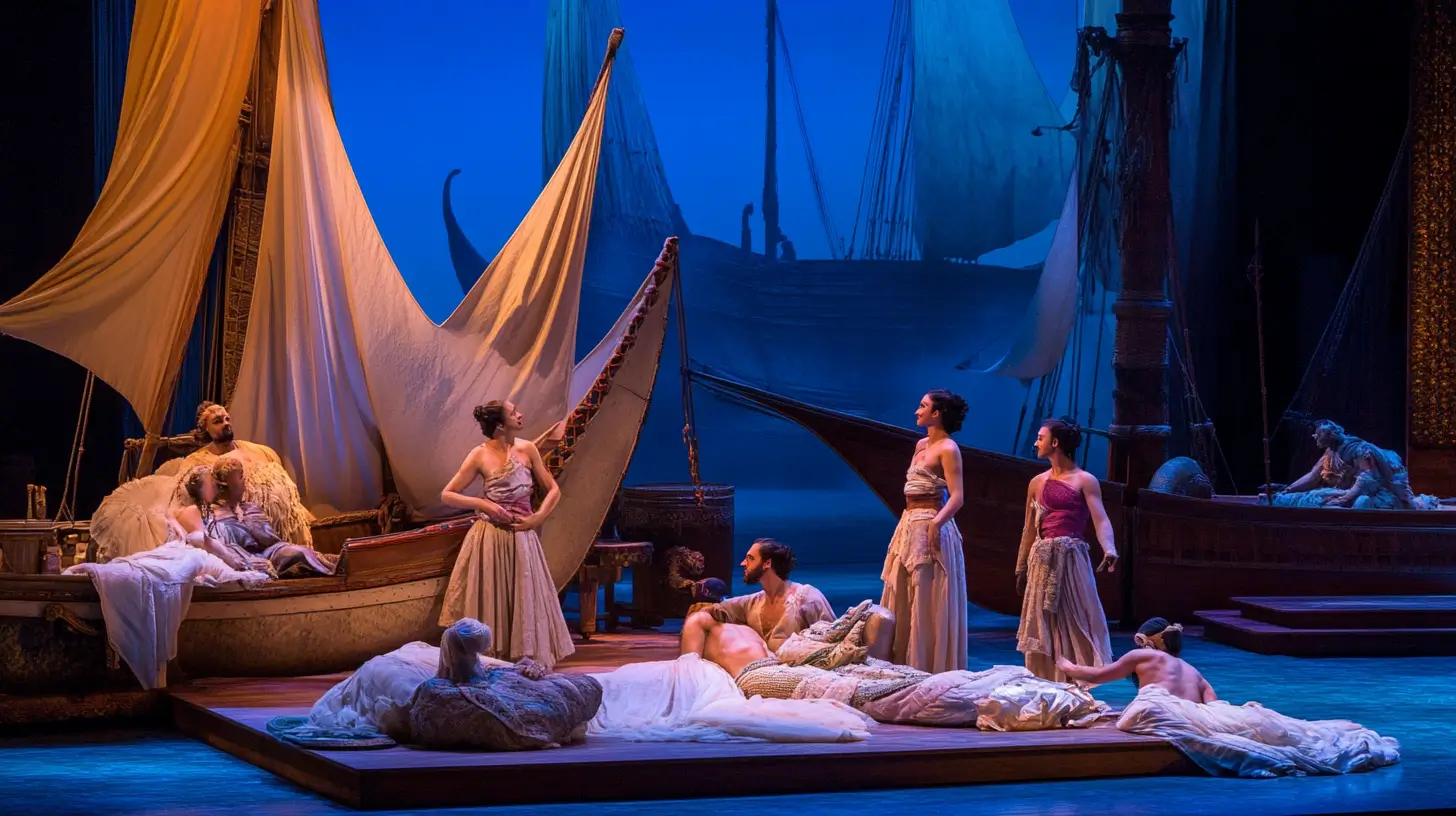
The music of “Le Corsaire” is as dynamic and varied as the ballet itself. Initially composed by Adolphe Adam, the score premiered in 1856 and has since been expanded by six additional composers, including Cesare Pugni and Riccardo Drigo. These contributions have enriched the musical tapestry of the ballet, supporting its dramatic and adventurous themes.
Adam’s original score laid the foundation for the ballet’s musical identity, but the subsequent additions gave “Le Corsaire” its distinctive sound. The music enhances the emotional and narrative depth of the ballet, with each piece meticulously crafted to complement the choreography and storytelling. This blend of music and dance creates an immersive experience for the audience, drawing them into the world of piracy and romance.
The Mariinsky Ballet’s performances of “Le Corsaire” are particularly noted for their musical excellence, often accompanied by only seven performances by the English Chamber Orchestra under the baton of conductor Eugene Kornblit. This collaboration between music and dance brings Lord Byron’s poem to life, making “Le Corsaire” a true masterpiece of the romantic ballet era.
Notable Performances and Dancers
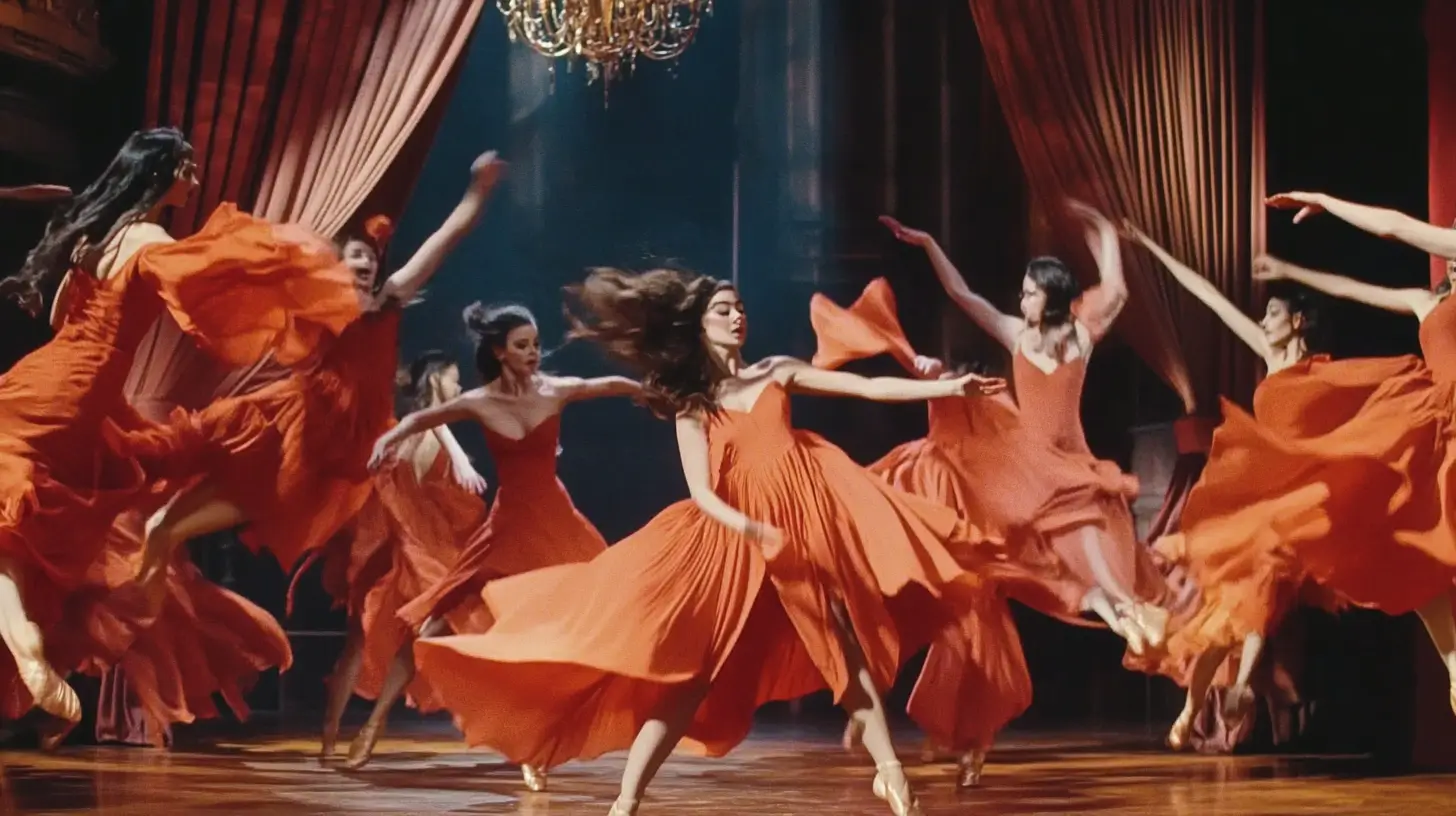
“Le Corsaire” has seen many notable performances and dancers, each bringing their unique interpretation to the ballet. Marius Petipa, who played Conrad’s leading role in the initial performance, set a high standard for future dancers. His portrayal of the heroic pirate remains a benchmark in the world of ballet.
Brooklyn Mack, known for his thrilling performances, is another prominent dancer with “Le Corsaire.” His dynamic and engaging portrayal of Conrad has captivated audiences and elevated the ballet’s appeal.
The American Ballet Theatre’s production, featuring over 120 performers, showcases exceptional virtuoso dancing, making it a highlight in the ballet’s history.
American Ballet Theatre’s Influence
The American Ballet Theatre (ABT) has played a vital role in bringing “Le Corsaire” to a broader audience. Their performances have attracted significant public interest, contributing to a deeper appreciation of ballet. ABT’s dynamic and engaging productions have captivated audiences, making “Le Corsaire” a popular staple in American ballet repertoire.
With a reputation for excellence, ABT’s interpretation of “Le Corsaire” has set a new standard for ballet productions. Their innovative approach and commitment to showcasing the ballet’s key dances have elevated the performance, making it a must-see for enthusiasts and newcomers. ABT’s influence continues to shape the perception and popularity of “Le Corsaire” in the United States.
English National Ballet’s Staging
The English National Ballet has also made a significant contribution to the legacy of “Le Corsaire.” Their innovative staging, utilizing original designs and a reworked score, has enhanced the visual and auditory experience of the ballet. This British ballet company has gained recognition for its unique approach, making “Le Corsaire” accessible and engaging for contemporary audiences.
The English National Ballet’s new production features a complete reimagining of the ballet, with new orchestration and elaborate sets and costumes designed by Bob Ringwood. This creative approach has breathed new life into “Le Corsaire,” making it a standout performance in the ballet’s rich history.
Signature Scenes and Pas de Deux
“Le Corsaire” is renowned for its signature scenes and pas de deux, which are highlights of the ballet. The pas de deux between Medora and Conrad in Act II is characterized as sweet rather than passionate, showcasing their tender relationship. This dance is a poignant moment in the ballet, emphasizing the depth of their love.
The signature pas de deux with Medora, Conrad, and Ali is described as glorious, highlighting the complex relationships between the slave girls and the other characters. This dance is a testament to the ballet’s intricate choreography and the dancers’ skill. Act I, the pas de deux, featuring Gulnare and Lankendem, is another dramatic interaction that emphasizes the dynamics of power and desire among the slave girls.
A significant pas de deux occurs in Act II, often performed as a pas de deux between Medora and Ali, showcasing their relationships and the ballet’s key themes. The Grand Pas de Trois des Odalisques is another celebrated musical section of the imperial ballet, often performed independently due to its popularity. Medora’s active participation in her escape from Lankendem, expressed through a rose, adds a layer of drama and emotion to the ballet.
Behind the Scenes: Choreography and Design
“Le Corsaire” choreography blends intricate group formations and dramatic storytelling, often drawing stylistic influences from other ballets. This mix can sometimes appear disjointed, but it showcases the artistic director’s and dancers’ strength and skill through synchronized movements and complex patterns. The choreography for American Ballet Theatre’s (ABT) production is credited to artistic director Konstantin Sergeyev, based on Marius Petipa’s original work, ensuring that the essence of the ballet remains intact.
Design elements are crucial in bringing “Le Corsaire” to life. Costumes are designed to reflect the story’s exotic setting, enhancing the performance’s visual appeal. Notable designers like Roger Kirk and Bob Ringwood have contributed to various productions, creating elaborate sets and costumes that immerse the audience in the world of pirates and adventure.
The English National Ballet’s version, with its unique scenic designs and reworked musical score, makes a significant contribution to the ballet’s repertoire in the UK.
The Legacy of Le Corsaire

“Le Corsaire” remains a staple in ballet repertoires worldwide, celebrated for its vibrant and engaging performances. Its ability to captivate audiences and dancers alike has ensured its place in the pantheon of great ballets. Despite its somewhat incoherent storytelling and the reliance on a mix of borrowed choreography, “Le Corsaire” continues to enchant with its dramatic narrative and rich musical score.
The ballet’s legacy is also marked by its influence on choreographers and dancers. From Joseph Mazilier’s original production to Marius Petipa’s transformative revivals and modern reinterpretations, “Le Corsaire” has evolved while maintaining its core themes of love, adventure, and betrayal. Its enduring appeal lies in its ability to blend romance and excitement, making it a timeless classic in the world of ballet.
Summary
In summary, “Le Corsaire” is a ballet that has stood the test of time, captivating audiences with its thrilling tale of love and adventure. From its origins, as mentioned in Lord Byron’s poem, with just nine performances, to the numerous revivals and modern productions, the ballet has evolved while maintaining its essence. The iconic characters of Conrad, Medora, and Birbanto, along with the dramatic music and intricate choreography, create an enchanting and exhilarating performance.
The legacy of “Le Corsaire” is a testament to its enduring charm and influence in the world of ballet. Despite its complexities and borrowed elements, its ability to engage and inspire ensures it will remain a beloved classic for generations. As you explore the “Le Corsaire” world, you will discover a rich tapestry of history, music, and dance that continues to captivate and inspire.
Frequently Asked Questions
What is the origin of “Le Corsaire”?
“Le Corsaire” originates from Lord Byron’s poem “The Corsair,” published in 1814, and debuted as a ballet by Joseph Mazilier on January 23, 1856.
Who are the main characters in “Le Corsaire”?
The main characters in “Le Corsaire” are Conrad, the heroic pirate; Medora, the brave heroine; and Birbanto, Conrad Conrad, and Medora’s betraying second-in-command.
What makes the music of “Le Corsaire” unique?
The music of “Le Corsaire” is unique due to its initial composition by Adolphe Adam, enhanced by contributions from six additional composers, resulting in a diverse and dynamic score that powerfully underscores the ballet’s adventurous and romantic themes.
How has “Le Corsaire” evolved over the years?
“Le Corsaire” has evolved significantly since its debut, with various revisions and adaptations, notably by the choreographers Marius Petipa. Contemporary productions keep the ballet fresh through innovative interpretations.
What is the significance of the English National Ballet’s “Le Corsaire” production?
The English National Ballet’s production of “Le Corsaire” is significant for its innovative staging, original designs, and reworked score, which enhance the visual and auditory experience, making the ballet more appealing to contemporary audiences.

